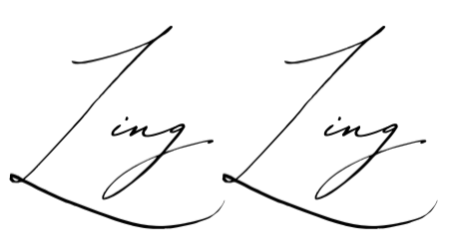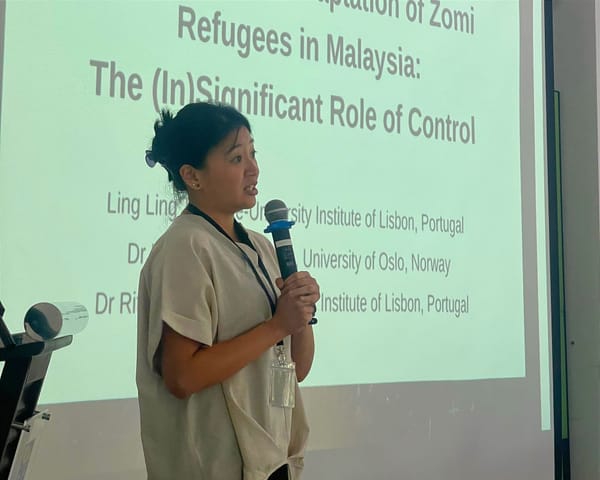Equity And Equality Are Different. We Need Both.
Equity and equality have been used interchangeably, so much so that it can get confusing. But are they the same?

Equity and equality have been used interchangeably. So much so that it can get confusing. The two words almost look the same, but are they?
This article will examine the meaning and differences between equity and equality and share some real-world examples.
What is Equality?
Equality means giving everyone the same amount and type of resources. Typically, the purpose of equality is to maintain harmonious relations. The harmony of relationships is based on reciprocity and balanced social ties.
In other words, You scratch my back, and I'll scratch yours.
In 17th and 18th century Europe, the Age of Enlightenment promoted liberty, reason and the scientific method. As the movement grew, philosophers considered equality within society. This created a paradigm shift at a time when the Catholic Church and Monarchies were in power. Concepts of equal rights and equal treatment started revolutions. Eventually, equality became the core principle of many nation's constitutions.
At first glance, equality might seem like a fair deal. Wouldn't everyone want to have equal access to education or healthcare?
Equality in a classroom means every student uses the same materials for their studies. Equality in the workplace means every employee uses the same tools and resources to do their job well.
Yet, looking deeper into the matter, we see that not everyone has similar needs. Being given the same resources does not necessarily guarantee a fair outcome. In fact, equality-based treatment may become an obstacle or punishment for those who have different needs. Instead, people will need to work doubly or triply hard to overcome the obstacle and achieve the same outcome as others.
For example, people with varying physical abilities may need different tools or materials to study or work well. A blind student cannot use the same material as other students, and a physically disabled worker can't use the same desk as other colleagues.
Equality-based programs may have started with good intentions, but such programs may be perceived as unequal in a diverse society. Companies may invest in creating minority support groups for women or LGBTQ+ employees to demonstrate solidarity and fairness. Yet, access to these groups' resources is best limited to specific employees. Otherwise, the group support may not reach the right audience. The program may not achieve its goal or serve its purpose with limited resources.
While these programs aim to achieve equality, they actually aim for equity.
What is Equity?
Equity is the fair treatment and allocation of resources considering inequality in society. In other words, equity occurs when resources are shared based on each person's needs. Equity helps to level the playing field.
Each person is unique. Because of this uniqueness, each person faces different challenges, is offered different opportunities, and has access to different resources. As such, each person encounters diverse barriers to success. Equity aims to eliminate these barriers by providing support and resources based on individual needs.
For example, blind students are provided with audio and braille reading materials for their studies, and employees who use wheelchairs are provided with an ergonomic desk accessible from the car parks.
Why is it important to know the difference?
One size does NOT fit all, especially in health. pic.twitter.com/PE8WrwqHcn
— Robert Wood Johnson Foundation (@RWJF) July 27, 2019
While the meanings of equality and equity are different, they work hand in hand. Equality cannot be achieved without equity.
To create a fair and just world, our actions must focus on equity. Equity ensures that everyone receives the right resources and support based on their individual needs. Thus, the outcome is equality, fairness, and justice.
Equality or Equity: Which works best?
The Robert Wood Johnson Foundation created the graphic above that well depicts the difference between equality and equity.
When the approach focuses on equality, everyone is given equal opportunities, regardless of their needs and abilities. As in the image, everyone rides the same type of bicycle. Bicycles can be so much fun to ride! Yet, when the bicycle is not customised to the size and ability of the rider, cycling can be a challenge and dangerous! The approach is equality, yet inequity remains.
But if the rider uses a bicycle customised to their size and ability, everyone can enjoy riding a bike. This approach is equity, and the result is equality.
To further illustrate equity and equality, we will look at some real-world examples in different sectors of society.
Equity in Education
Higher education offers greater social mobility, especially to disadvantaged groups. The Organisation for Economic Co-operation and Development (OECD) runs the Programme for International Student Assessment, also known as PISA. PISA measures the reading, mathematics, and science knowledge of 15-year-olds from over 60 countries. Its purpose is to hold governments accountable for their educational policies.
PISA's results indicate a country’s education system's instructional quality and learning equity. A high score shows that the government provides effective and equitable educational support to their students and teachers.
In another example, TzuChi, a Taiwanese Buddhist non-profit organisation, in collaboration with the local Turkish government, opened the Menahel International School for Syrian refugee children. Access to school is not only an opportunity to learn; it provides an opportunity for greater social mobility for Syrian refugee children. It gives these children a chance to lead a life of dignity, maintain their Syrian roots, and adapt to Turkish life. Currently, over 1600 students are attending this school.
Equality in the Workplace
The European Foundation for the Improvement of Living and Working Conditions, or EUROFOUND, commissioned research on promoting gender equality in the workplace. The study analysed gender equality programmes and their impact on human resources in companies based in seven countries.
Based on 21 case studies, the research found that efforts to create a gender-equal workplace are complex and challenging. At best, pockets of equality within the organisation can be achieved. Yet, the sustainability of gender equality remains questionable. A change management approach, where equity and equality are embedded in all levels of an organisation, is required.
LeanIn, a book by Sheryl Sandberg, advocated for greater gender equality in the workplace. The book became a global movement. LeanIn is a worldwide community with a mission to
help women achieve their ambitions and work to create an equal world.
LeanIn supports the global movement and community through circles. Circles are self-led support groups for women to gather, learn and support each other in achieving their career ambitions. LeanIn Circles provide guidance on how to organise a circle. They now have more than 50,000 members in 184 countries.
Equity in Healthcare
World Health Organization (WHO) defines equity as
the absence of avoidable or remediable differences among groups of people, whether those groups are defined socially, economically, demographically or geographically.
In healthcare, WHO recognises that health inequities occur due to multiple factors, not only the lack of equal access. As such, WHO maintains a Health Equity Monitor, a database containing demographic, geographic, and socio-economic factors contributing to health inequity.
Researchers in Tanzania looked into the equity of healthcare financing, where impoverished people use public care facilities, while the rich prefer higher quality and higher cost facilities. Researchers concluded that reforming health financing can improve equity, where everyone can access much-needed facilities. The reform involves the promotion and integration of national health insurance with the healthcare system. Researchers recommended further subsidies for the poor through efficient use of taxation.
Illusions of Equity and Equality
As people become aware of equity and equality, we must be mindful of its potential misuse. This misuse aims to maintain the status quo and to keep the privileged group in power.
The illusion of equality occurs when positive characteristics are emphasised in the disadvantaged group. In contrast, negative traits are stressed in the privileged group. The emphasis on opposite aspects helps sustain the belief that society is just.
For example, wealthy expatriates complain about their stressful work and the need to sacrifice family time. The stressful work is needed to keep appearances and to stay ahead in their careers. Locals with lower wages can lead a balanced work-life style and spend more quality time with family. The negative aspect of expatriate life is compared with local colleagues' positive, balanced lives. This reasoning does not address wealth and job access inequality between foreign and local talent, thus continuing the status quo. High-paying jobs will continue to be given to foreign talent while local talents are deprived of career opportunities.
The illusion of equity stems from stereotypes and social judgements. Stereotypes are used to paint the picture of an equitable and balanced society. On the contrary, inequity in society remains because stereotypes are accepted as a fact.
For example, low-wage migrant workers are usually stereotyped as poorly educated and uncivilised. They are deemed most suitable for dirty, dangerous, and demeaning jobs, also known as “3D” jobs. The “better” educated and civilised locals recognise the need for low-wage migrant workers. Such workers are required for the nation's growth and 3D services, such as construction, sanitation, retail and many others. Some known examples are Bangladeshi and Nepali construction workers in the Middle East. Also, Filipino maids in East and Southeast Asia.
Final Note
Equity and equality are different in their definitions. We need both equity and equality. Understanding these differences is the first step towards creating a fair and just society.
It doesn't stop here.
We need to educate ourselves on the inequalities and inequities in the world, most notably in our society. Find out where the issues are in your community. Investigate and talk to community members and leaders.
Finally, when you understand the pertinent issues in your community, take action.
This post is updated from the originally published post on Culture Spark Global on 12 October 2021 and written by the same author, Ling Ling Tai.





